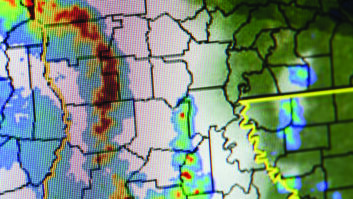With so many questions bouncing around about the implications for stations of the new CAP standard, Radio World is asking industry alerting leaders to provide their perspectives in a series of Q&As. Here we talk to Harold Price, president of equipment maker Sage Alerting Systems.
RW: Now that the EAS/CAP “shot clock” has been started, what question are you getting most from radio station engineers and managers, and what are you telling them?
Price: The most common question is pricing for our new unit. Some ask if there is a software upgrade for our legacy unit, almost all realize CAP is associated with getting data on a LAN, so they aren’t surprised to hear that new hardware is required.
RW: Is there enough information available from federal regulators for stations to know what they need to do? Or are stations hung up until the FCC puts out more specific rules?
Price: The simple answer is that the clock has started, so stations know they need equipment that is able to receive CAP messages in the next 180 days. While the FCC *may* put out new rules, they aren’t required to do so by the current rules.
As a practical matter, however, there are two groups of issues: the CAP protocol itself, and how a station will receive CAP messages.
The CAP protocol and IPAWS profile are now complete. There are two minor clarifications needed in the Implementation Guide, neither directly visible to a station.
As for delivery of messages, FEMA has not yet published specific instructions on how to get messages from its CAP server (IPAWS OPEN). Vendors will probably need to issue a software update in the future to handle this. All users, no matter which vendor they chose, should anticipate at least one software update before CAP is in regular use. While FEMA has not given specific details for IPAWS OPEN, the mechanism to be used is known, and falls under the umbrella of “web services.”
In many cases, however, CAP messages will also come from the states. Several states have already deployed, or are deploying now, state servers. Washington State and MyStateUSA is a good example of this. Other areas are using GSSNET. In those cases, the specifics are currently known. Those states can provide the information needed by stations to access state messages.
RW: What’s happening behind the scenes regarding discussion of audio encoding, and why does it matter?
Price: One of the minor clarifications mentioned above has to do with audio encoding, that is, formats, compression types, number of channels, sample rates, etc. It is important for originators of messages to know what formats are supported by CAP broadcast equipment, and for CAP broadcast equipment to know what formats it is required to handle. One area of the specifications can be interpreted in two different ways, that only two specific formats are allowed, or that any possible format is allowed, including formats yet to be developed. A change is needed to specifically state the specific formats that are allowed.
RW: Should radio stations act now to comply with CAP V1.2? Or wait? Why?
Price: Radio stations can proceed with ordering equipment from the vendor of their choice now, if that vendor has pledged to provide a free software upgrade to match the final version of CAP 1.2. Most have. If you need equipment, are building a new studio, drying out after a flood, looking at a costly repair for 15 year old equipment, make sure you buy a CAP ready device. There is no reason to wait.
Operationally, don’t expect to be able to hook up to a CAP server this week, except in some states. While the broadcasters are building up infrastructure to receive CAP alerts, others are building up infrastructure to send alerts. The goal is to all meet up near the end of the 180 day clock. FEMA has said that they will be able send national alerts before the end of the clock. States can send alerts, and you are required to be able to receive them by the end of the clock, but there is no requirement that the state be able to send CAP alerts by the end of the clock.
Stay tuned for updates. Stay in contact with your local EAS coordinating groups, and State Emergency Communications Committee as they work on the new state plans.










